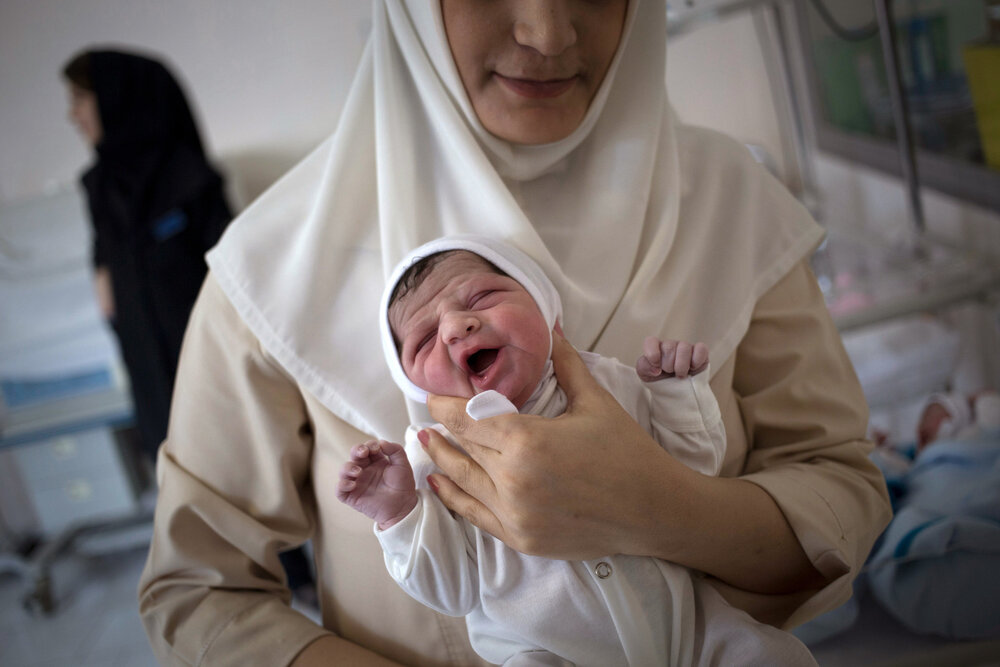Majlis draws up plan to encourage childbearing

TEHRAN – The Majlis (Iranian parliament) has developed a support plan to encourage families to increase childbearing.
The plan stipulates health insurance for infertile couples, providing services and facilities to working women, providing health and nutrition support packages to mothers and children, educational opportunities for student mothers, providing livelihood support to families, and ongoing medical services to pregnant women, Mehr quoted Fatemeh Ghasempour, head of the women and family faction of the Majlis, as saying.
Population growth policies
Some 14 policies to support childbearing and the family were announced by the Leader of the Islamic Revolution Ayatollah Ali Khamenei in [the Iranian calendar year] 1389 (March 2014-March 2015) when he stressed that social, cultural and economic development should be done in accordance with these general policies to support families.
The policies address the need to increase the population and the various dimensions of it, including childbearing, facilitating marriage and strengthening the family, reproductive health, promoting the Iranian-Islamic lifestyle, empowering young people, honoring the elderly, and the environment, which can lead to an increase in the quantity and quality of the population if it is timely and continuous implemented.
Kimia Mohammadzadeh, a member of the working group for women's and family at the independent association of the University of Tehran, told Mehr news agency that thus, instead of considering family support and youth marriage, policymakers adopt policies that lead to delays in marriage and family formation.
Childbearing, which should be a public issue, became an inefficient policy due to lack of follow-up, she said.
Zero population growth within next century
Nicholas Eberstadt, the Henry Wendt Chair in Political Economy at the American Enterprise Institute (AEI) wrote in an article earlier in July that the fertility rate in Iran has dropped by 70 percent over the past 30 years, which has been the highest decline in human history.
Melinda Gates, an American philanthropist and co-founder of the Bill & Melinda Gates Foundation, also wrote on her Twitter account that “The fastest decrease in the rate of childbearing per woman in the history of the world has happened in Iran!”
Seyed Hamed Barakati, deputy health minister for family and school population, said in May that Iran’s population growth rate has decreased to less than one percent for the first time over the past four decades.
At the beginning of the Islamic Revolution (in 1979), the country's population grew by 2.5 percent annually, however, suddenly, population growth reached about 1.5 percent in the 1980s, he highlighted.
According to the data released by the National Organization for Civil Registration, comparing past three years shows some 1,196,134 infants were born in the country whose births were registered last year, while 1,366,509 births occurred a year before it, and 1,487,913 births have been recorded in the Iranian calendar year 1396 (March 2017-March 2018), a difference of roughly over 120,000 per year.
Iran: the world’s oldest
Mohammad Esmaeil Akbari, a senior advisor to the minister of health, has said that the world has grown about 5 years older over the past 70 years, but the population of Iran has unfortunately grown 10 years older in the past 60 years.
“Currently, the elderly constitute less than 10 percent of the population and we are considered a young country, but we are getting older every year so that in the next 20 years, we will be one of the oldest countries in the world and the oldest by the next 30 years,” he explained.
Statistics show that during the past 20 years, the population ratio of children and adolescents has decreased, and, in contrast, the share of the elderly has increased.
In addition, the average age of the Iranian population has been increasing over the past 40 years, and the population on average is 8.7 years older. Statistics show that this upward trend has had a similar growth rate for men and women.
FB/MG
Leave a Comment